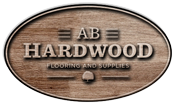You'll find hardwood flooring that suits virtually any style. Here are some considerations to keep in mind when choosing your wooden floors for the kitchen:
We carry a big variety of hardwood floors and our professional staff members will be more then happy to choose floors for your kitchen.
Polishing Hardwood floors
Engineered flooring is supposed to be more stable than solid wood. From a technical aspect, this should be true. But many engineered flooring manufacturers restrict the use of their products to a certain RH range. Warranties that specify 35 to 55 percent RH or 40 to 60 percent RH as the acceptable range. If the flooring is exposed to conditions outside these ranges, the warranties are void. So using engineered flooring may be an option for reducing winter-time floor issues, but check the manufacturer’s recommendations and warranty. Narrow boards will shrink less than wide boards for a given change in moisture content (MC). A 5-inchwide plank will shrink twice as much as a 2¼-inch-strip. So the size of the gap between 5-inch boards will be twice as big as the gap between 2¼-inch boards. More joints means more places to distribute gapping. Some species are more dimensionally stable than other species. For a given change in MC, a 5-inchwide hickory plank will shrink more than a 5-inch-wide red oak plank. The U.S. Forest Service, and others, publishes dimensional change coefficients for different species. A second solution to excessive winter gapping is to use a species of wood that is more stable (one with a smaller dimensional change coefficient). Along the same line of varying dimensional stability, quartersawn flooring shrinks about half as much as flatsawn flooring for the same amount of moisture change, so quartersawn flooring will have smaller gaps than flatsawn flooring under the same circumstances. Therefore, from a wood standpoint, to have the smallest winter gaps, use quartersawn, narrow boards from a stable species.






